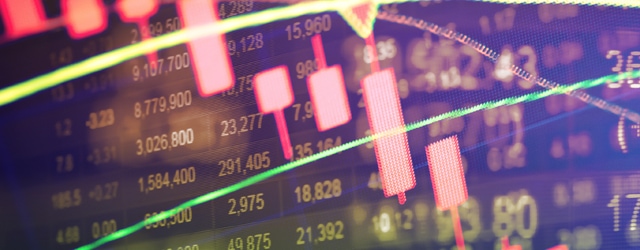Rising interest rates might not be the bogeyman they are made out to be.

The golden age of cheap corporate funding is coming to an end. Or is it?
Following Donald Trump’s surprise election as US president last November, markets reached a quick consensus that a new economic day was dawning. Trump and a Republican Congress would slash taxes, spend heavily on infrastructure and drive deficits back up. These policies would juice corporate profits but reignite inflation, forcing interest rates out of their long central-bank-induced trough at last. That process in the United States would inevitably echo across the globe.
Investors everywhere reacted by piling into stocks and dumping bonds. Yields on benchmark 10-year Treasury bills went from 1.88% on November 8 to 2.6% in mid-December, pulling corporate rates up with them. Financial directors rushed to fill their companies’ coffers while they could. “The first week of 2017 saw $45 billion in [US] corporate issuance, which has got to be some kind of record,” says Joseph Lynagh, who heads asset manager T. Rowe Price’s Ultra-Short Term Bond Fund.
Yet Lynagh and other market watchers advise borrowers not to panic. Trump’s vague promises to put the US economy on steroids are due for a tough encounter with reality. The new president’s perceived unpredictability makes the Federal Reserve less, not more, likely to push through 2017 rate hikes. The European Central Bank should remain in super-lax mode for some time; the eurozone’s recovery remains anemic, with officials forecasting 1.5% GDP growth this year. Corporations have gorged on cheap borrowing in recent years, and investors everywhere remain starved for yield. All these factors decrease the chance of a credit crunch for the near term.
“Over a longer period of time we are expecting rising rates, but not in 2017,” says Robert Cohen, director of global developed credit at fixed-income investor DoubleLine Capital. “The conventional wisdom is that the credit cycle has a few more years on it.” As a signal of markets pausing for reflection, T-bill yields have dipped 20 basis points from their early December highs to around 2.4% in mid-January.
It looks like a good bet that Trump and a Republican-dominated Congress will increase US federal budget deficits, which since 2014 have been in a modest range of about 2%–3% of gross domestic product. But economies are complex mechanisms, and analysts question whether that red ink will actually drive inflation and accelerated rate hikes from the Fed. “Economists have not been able to find any relationship between deficits and inflation,” says Marty Fridson, chief investment officer at fixed-income specialist Lehmann Livian Fridson Advisors and regular writer on high-yield markets. “If there were, Japan would have a very robust inflation rate.” Yield analysis shows markets are pricing in an average of 1.8% US consumer price inflation over the next five years, just a hair above the current rate of 1.6%, he adds.
Trump’s fabled unpredictability and aversion to policy detail could in fact delay the tightening that the Fed was planning in 2017, Lynagh says. Minutes from the central bank’s December policy meeting, released in early January, “emphasized considerable uncertainty” about the incoming administration and Patrick Harker, president of the Philadelphia Fed, agreed it is “too early to know what changes would be implemented and how such changes might alter the economic outlook.”
These comments likely signal a slower finger on the interest-rate trigger, Lynagh concludes. “If you could take politics off the table, we would be on a path to more-normal rates with three tightenings expected in 2017,” he says. “Now I believe the Fed wants to let the economy run hot for a while.”
The European Central Bank (ECB) is still less likely than the Fed to turn dramatically hawkish any time soon. Uncertain elections are looming in its two core nations, Germany and France. This is not the time to restrain credit. “We envisage the ECB will continue to taper its quantitative easing program,” says Fenton Burgin, head of UK debt advisory at Deloitte’s London office.
Divergent monetary outlooks on the two sides of the Atlantic have opened an unusually large interest rate gap. “BB-rated US corporates, for instance, are paying about 70 basis points more than comparable credits in European markets,” Burgin estimates. That helps restrain US borrowing costs in two ways: American multinationals can borrow in Europe to fund operations there, and investors worldwide flock to dollar investments, increasing capital supply.

Companies, for their part, look well stocked after a record debt binge during the quantitative easing years. CFOs across the globe have been anticipating rate hikes for some time, and they locked in financing accordingly. “We saw many companies refinancing five-year facilities through 2015 and 2016 with a view that they were at the bottom of the rate cycle,” Burgin says.
Despite the uptick in US government bond returns, money managers around the world also remain starved for yield, promising abundant cash on hand for corporate borrowers. “We see unbelievably strong demand for credit from investors,” DoubleLine’s Cohen says. “Investment banks always seem to struggle to find enough paper to meet investor demand.”
That appetite is quantifiable in the high-yield bond market, where capitalists take bets on riskier corporate credits. Bloomberg’s USD High Yield Corporate Bond Index soared by 20% in the 12 months to mid-January, as markets shrugged off defaults by overextended energy companies and a rise in oil prices shored up survivors. Investors who started 2016 in a panic head into 2017 on the overconfident side, Fridson concludes. “Economists are saying there’s a 20% chance of recession over the next 12 months; the high-yield market is saying 0%,” he notes.
With financiers clamoring to lend, central bankers reluctant to snatch away punch bowls, and global growth still limping, corporate finance watchers are as inclined to ask why corporations will keep borrowing as how. The recent ultra loose years have warped the classical logic that companies take on debt to fuel expansion. An increasing share of borrowing has been recycled to shareholders as dividends and buybacks, bolstering equity prices but building no new factories. “A lot of activity over the past few years has been ‘nonproductive borrowing,’” Price’s Lynagh comments.
The next borrowing wave may be driven by mergers and acquisitions, particularly US companies using the strong dollar (currently at a 14-year high against a trade-weighted currency basket) to scoop up targets in Europe or Asia. “We anticipate a pickup in M&A and CFOs saying to themselves that debt is still their cheapest source of capital for that,” Deloitte’s Burgin says.
Massive leverage is driving acquisitions at peak share prices, and nonproductive loans that add nothing to the top line still need to be paid back somehow. Bearish observers might be tempted to say we have seen this movie before, and it ends badly. The plot is still unfolding for the moment, though. “As rates rise, loan-to-value ratios can jump and conditions deteriorate—particularly for high-yield borrowers,” Robert Cohen says. “That feels like a problem, but not a 2017 problem.”
Enjoy the easy money while it lasts, but keep an eye on those ratios.



